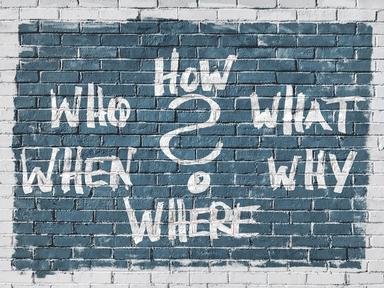Quiz Answer Key and Fun Facts
1. Gasp! Gulp! Splash! All these words are examples of which figure?
2. Even if you are a cowboy you probably use rhetorical figures, like "I've got fifty head", to mean fifty cows. What is this figure called, in which the part stands for the whole?
3. "My mother-in-law: I hate her". This very common sentence is an example of hyperbaton, in which the common order of words is changed to get more emphasis or effect. But to be even more precise, what kind of hyperbaton is this?
4. You come home from work, you're a bit hungry and you groan "I'm starving!". What kind of figure you're using?
5. There's a figure called litotes, that can be considered a form of understatement. Can you identify the example of litotes among the following statements?
6. Mae West once said: "It's not the men in my life, it's the life in my men." This is a brilliant example of another "scheme", the scheme being a figure of speech that changes the normal arrangement of words in a sentence.
But what kind of scheme has been used here?
7. Let's get back to metaphor, or to the kind called metonymy. Please, identify the metonymy here:
8. "O brawling love! O loving hate! O heavy lightness! serious vanity!" From "Romeo and Juliet" we get an example of another figure of speech where contradictory terms appear side by side. What is it called?
9. "I am angry; no, I'm furious!" it is an example of a figure of interruption. Can you identify which one?
10. And now the last trope, called antaclasis (Greek, from reflection). It consists in repeating a single word with a different meaning. It is widely used in puns and advertising slogans. So you can try to complete this antaclasis yourself: She is nice from far, but...
Source: Author
zordy
This quiz was reviewed by FunTrivia editor
agony before going online.
Any errors found in FunTrivia content are routinely corrected through our feedback system.
